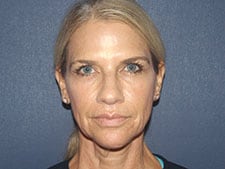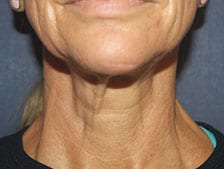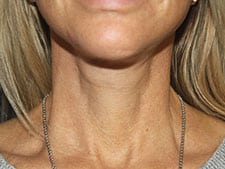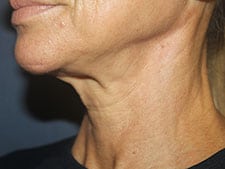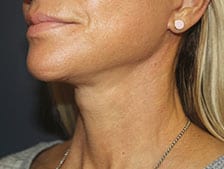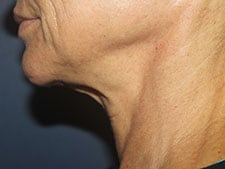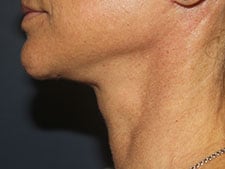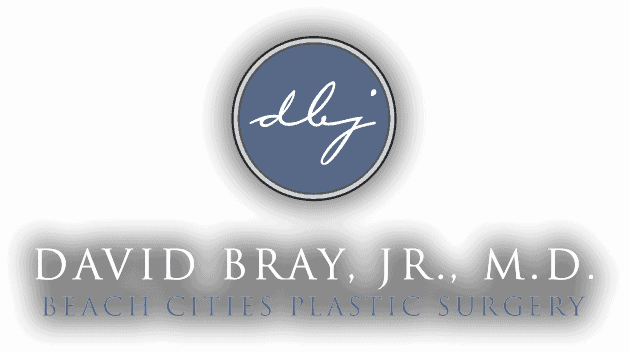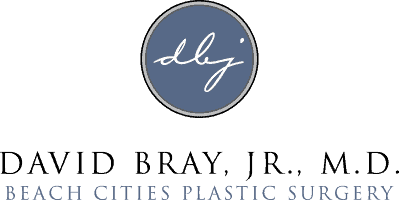Facelift Surgery
in Torrance, CA
Also serving Palos Verdes & Redondo Beach
David Bray, Jr., MD has performed hundreds of facelift procedures. As a result, Dr. Bray, Jr.’s patients benefit from his experience and expertise. Due to his vast experience with facelift surgery, Dr. Bray, Jr. understands that a facelift procedure must be modified for every patient to best meet the patient’s goals. Dr. Bray, Jr. will customize your facelift based on your concerns and facial characteristics. When it comes to your face, it is important to choose a surgeon who frequently performs facelift surgery.

Dr. Bray, Jr. is one of only a small group surgeons in the nation who is board certified by all three of the following boards: The American Board of Plastic Surgery, The American Board of Facial Plastic and Reconstructive Surgery, and The American Board of Otolaryngology-Head and Neck Surgery. These credentials help assure patients that they are receiving the highest quality care when they undergo a facelift procedure with Dr. Bray, Jr. Choosing a facelift surgeon can be a difficult decision. Knowing that your surgeon is board certified by all three of these boards can make the decision easier.
Los Angeles facelift surgeon Dr. Bray, Jr., performs many facelift procedures under local anesthesia. This means that the patient will be given medicine to numb the facial area and the procedure will then be done with the patient awake. For the appropriate candidate this technique provides many benefits. Dr. Bray, Jr. will customize your facelift based on your concerns and facial characteristics. It is important that every facelift is customized. Every face is different and the facelift procedure may be modified to optimize your results.
What is a Facelift (Rhytidectomy)?
Facelift surgery, or a rhytidectomy, is designed to restore a more youthful appearance by removing major wrinkles and sagging skin. It involves tightening of the facial and neck muscles as well as the removal of any excess skin.
The skin begins to wrinkle and sag as a result of age, sun exposure and genetics. Children and young adults have smooth, round faces due to evenly distributed fatty tissues in facial contours. Over time, the distribution of fat changes and the skin begins to sag. Not only does a facelift improve facial appearance but also has a dramatic effect on the neck, enhancing its contour and profile.
The Facelift Consultation
Dr. Bray, Jr. will evaluate your medical history in order to determine your overall health. He will then perform a detailed facial analysis. This analysis will include the forehead, brow, upper and lower eyelids, midface, cheeks, jawline, and neck. Dr. Bray, Jr. will evaluate facial volume, skin laxity, and the overall quality of the skin.
Dr. Bray, Jr. will discuss all of the options for facial rejuvenation. These options may be minimally invasive such as fillers, Botox, and skin care. He will review different surgical options and show you what to expect from each procedure. It is Dr. Bray, Jr.’s goal to create a natural appearance that is pleasing to you. He will listen to your concerns and make sure that you are able to make the decision that is best for you.
Preoperative Instructions: Avoid drugs that contain aspirin several weeks prior to surgery to minimize excess bleeding. You may be required to take antibiotics to prevent infection. You may be instructed to shampoo your hair the night before surgery. You should review the preoperative instructions provided by Dr. Bray Jr.
The Facelift Procedure Details
A facelift is frequently performed in conjunction with blepharoplasty (eyelid surgery), forehead lift, chin augmentation, and/or liposuction, to create an overall rejuvenation of the face. The procedure can be repeated as gravity continues its effects after the first surgery.
Facelifts are performed in outpatient surgical centers or in a physician’s office. The procedure may be performed with local anesthesia alone, with local anesthesia and intravenous sedation, or with general anesthesia.
All facelifts include the removal of excess skin and the tightening of sagging muscle and connective tissue. However, a variety of different facelift techniques exist. The technique used to tighten the muscle and deeper tissues in the cheek and neck may differ depending on the patient’s anatomy and concerns. Similarly, the length of incision may be adjusted based on the patient’s face and neck laxity. In some cases an incision is made in the neck to allow for further contouring of the neck. These many different approaches allow for Dr. Bray Jr. to customize the procedure for you. Dr. Bray Jr. will discuss the various options with you, and he will make recommendations regarding the procedure he believes will work best for you.
Post Operative Care
It is necessary to have someone drive you home and stay with you for the first 24 hours after your facelift. Initially you will have a large dressing wrapped around your head. You may also have surgical drains placed. These will be removed in approximately 24 hours. Sutures will be removed in 7-10 days.
You will see Dr. Bray, Jr. the day after the procedure and he will remove your dressing. At that time Dr. Bray, Jr. will assess your incision and make sure that you are healing appropriately. If drains were placed they will be removed at that time. Dr. Bray, Jr. will provide instructions on incision care.
To minimize scarring, the doctor may remove the sutures in stages. Scarring fades quickly. Swelling and discoloration decrease within two weeks.
We recommend that you avoid the sun for several weeks after surgery.
Complications following facelift are rare. These include bleeding, infection, loss of skin behind the ears, facial nerve injury, discoloration of the skin, numbness, asymmetry and scarring. Infection is rare due to the large blood supply to the face. As mentioned, the risk of bleeding is greater if you take aspirin or blood thinners within 2 weeks of the surgery. The risk of wound complications increases in diabetics, persons with a history of radiation, autoimmune and collagen disease as well as in smokers.
By following pre- and post-operative instructions, you will minimize potential problems.
Recovery: What to Expect
In the weeks following surgery, the facial skin and area around the ear may be numb. There may also be some temporary discoloration as healing begins, which may take a few months to disappear. Occasionally, the facial nerve is bruised during surgery, resulting in temporary loss of function or sensation. However, actual permanent damage to the facial nerve is rare.
The healing process is gradual. A single procedure often achieves the desired results. Most patients who have had facelifts are pleased with their new, more youthful appearance.
Types of Facelifts
 Dr. Bray Jr. performs a deep plane facelift. In this approach, the tissue layer deep under the skin and subcutaneous fat, known as the SMAS and platysma, is elevated to release retaining ligaments in the face and neck. This approach allows Dr. Bray Jr. to lift and tighten the mid-face as well as the lower face and neck.
Dr. Bray Jr. performs a deep plane facelift. In this approach, the tissue layer deep under the skin and subcutaneous fat, known as the SMAS and platysma, is elevated to release retaining ligaments in the face and neck. This approach allows Dr. Bray Jr. to lift and tighten the mid-face as well as the lower face and neck.
SMAS is an acronym for the superficial musculoaponeurotic system, which connects the face and neck muscles with subcutaneous fat and skin. The platysma muscle is a superficial muscle in the neck that can sag and fall during the aging process, in turn leading to platysma bands. The SMAS connects to the platysma muscle in the cheek and neck.
Deep plane facelifts elevate the SMAS and platysma and may provide long-lasting and natural-looking results that skin-only approaches may not achieve. Cheek volume can be restored, and jowling and platysma bands can be improved for a better neck and jawline contour.
The mini-facelift is a less invasive approach often used for people who aren’t quite ready for the traditional rhytidectomy or those who’ve had a facelift in the past and wish to tweak their results. Mini-facelift is best for patients with minimal or moderate skin laxity. It focuses on tightening facial structures and improving jowling as well as mild neck laxity. Candidates for mini-facelift are typically younger with mild jowling.
Facelift FAQs
What Is The Best Age for Facelift?
There is no perfect age for facelifts, but patients are typically in their 40s, 50s or 60s when they seek facial plastic surgery. However, people age differently, and many factors come into play, such as sun exposure, smoking history, diet, genetics and overall health. Skin elasticity and sagging skin may show up anytime, and mild jowling may bother some patients more than others. Schedule a consultation with Dr. Bray Jr. to see if facelift or another procedure is right for you.
Are There Non-Surgical Alternatives to Facelift?
 This depends on the severity of loose skin and other facial cosmetic concerns. Some non-surgical treatments may provide the enhancement you’re looking for, including injectables. Dr. Bray Jr. will discuss Botox, Juvéderm, and Restylane to see if these injectables can provide your desired results. Injectables can restore lost volume and improve moderate to severe lines and wrinkles but require maintenance treatments.
This depends on the severity of loose skin and other facial cosmetic concerns. Some non-surgical treatments may provide the enhancement you’re looking for, including injectables. Dr. Bray Jr. will discuss Botox, Juvéderm, and Restylane to see if these injectables can provide your desired results. Injectables can restore lost volume and improve moderate to severe lines and wrinkles but require maintenance treatments.
How Long Do Facelift Results Last?
In many cases, a facelift will make the cheek, jawline and neck appear 10 years younger. Once a patient has healed, the aging process will resume. However, the patient may always look more youthful than if they never had the facelift. Facelift results may also last longer, depending on how well you care for your skin and if you use sun protection. Facelift and other face procedures don’t stop the aging process but will help you age more gracefully.
Can I Bring Someone With Me to My Consultation?
You’re welcome to bring a trusted family member or friend to your consultation with our triple-board-certified plastic surgeon. Having a supportive loved one with you ensures all your questions are answered and that you understand the process completely. They can help you remember important pre-operative and post-operative instructions and make sure all parties are informed.

